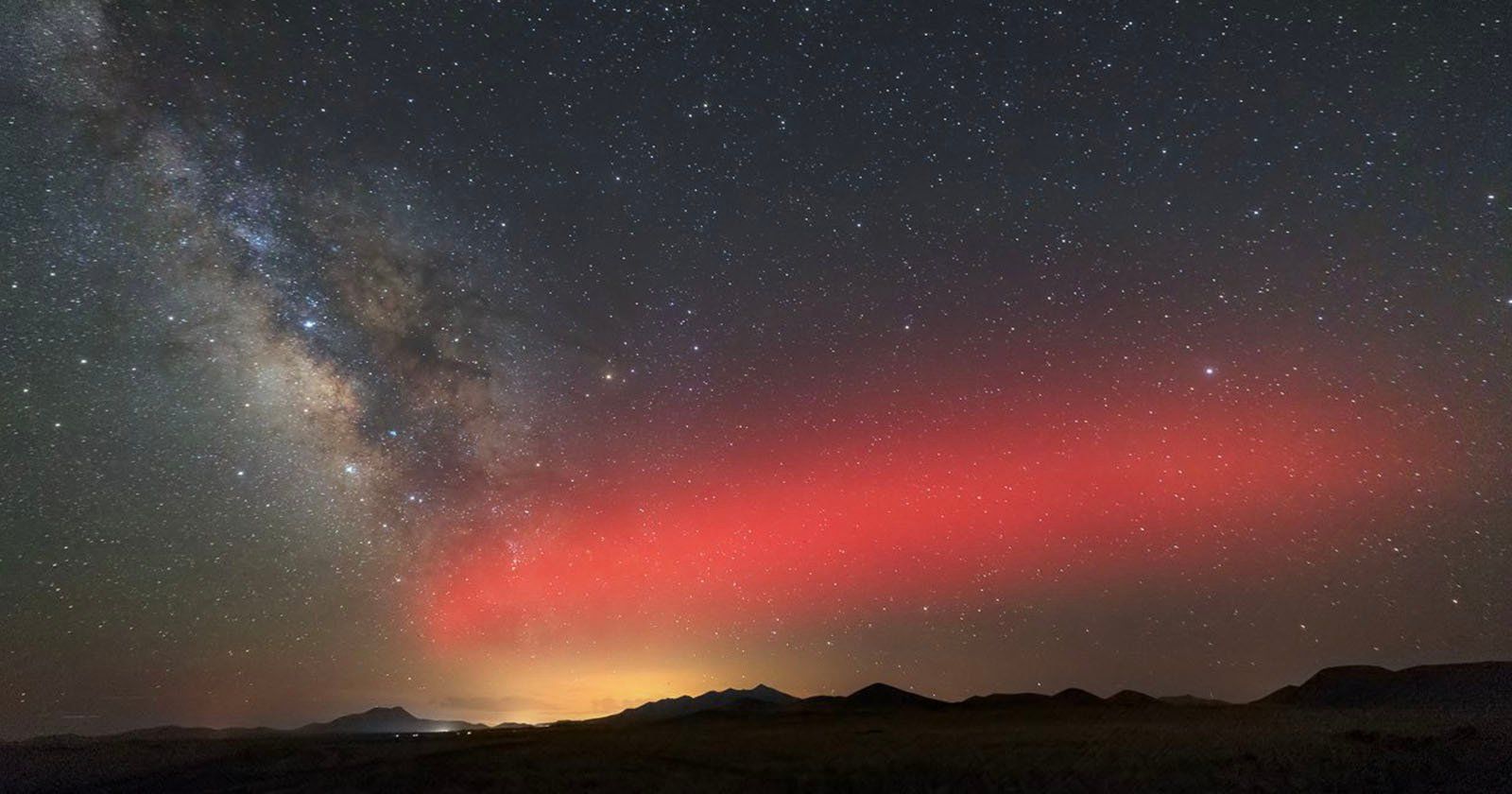Photographer Captures SpaceX Rocket Punching a Hole in the Atmosphere
A photographer captured a SpaceX rocket leaving behind an aurora-like red glow after it punched a hole in the ionosphere.
The ionosphere is the uppermost section of Earth’s atmosphere where space begins and where aurora lights are formed, it is located 50 to 400 miles above the surface.
On July 19, Jeremy Perez captured the red afterglow of the punctured ionosphere alongside the Milky Way Galaxy. The Falcon 9 rocket created the hole with its exhaust gases.
“After the rocket passed overhead, a red fluorescent glow expanded southward and crossed over the Milky Way,” Perez tells SpaceWeather. “It was visible for almost 20 minutes.”
Perez explains on Twitter that the red light was not all that bright from his vantage point in the San Francisco Volcanic Field, near Flagstaff, Arizona.
“This was not an obvious visual sight by this point and really relied on the camera to bring it out,” says Perez.
“San Francisco Peaks and Flagstaff light dome providing a landing point for the Milky Way down there.”
The red glow is a direct result of the rocket, which launched from Vandenberg Space Force Base in California, punching a hole in the ionosphere — and it’s not the first time this has happened.
“This is a well-studied phenomenon when rockets are burning their engines 120 to 190 miles (200 to 300 kilometers) above Earth’s surface,” space physicist Jeff Baumgardner of Boston University tells SpaceWeather.
“The red glow appears when exhaust gasses from the rocket’s second stage cause the ionosphere to recombine quickly.”
The ionosphere is filled with charged particles called ions and it is where aurora lights come from. Solar plasma reaches the ions and creates spectacular aurora colors.
Rockets spray out water and carbon dioxide as they travel which can alter the ionization of the ionosphere. Newsweek notes that the signature red color of the hole in the ionosphere is a result of oxygen ions combining with the rocket exhaust fumes which releases the same light as a red aurora.
A hole in the ionosphere last Wednesday impacted GPS systems but only affected location accuracy by a few feet.
Charles C.H. Lins told Ars Technica in 2018 that holes in the ionosphere could affect GPS even further — by up to 65 feet.
“Humans are entering an era that rocket launches are becoming usual and frequent due to reduced cost by reusable rockets,” Lin said.
“Meanwhile, humans are developing more powerful rockets to send cargo to other planets. These two factors will gradually affect the middle and upper atmosphere more, and that is worthwhile to pay some attention to.”
More of Perez’s photography work can be seen on his website.
Image credits: All photos by Jeremy Perez.
Source: PetaPixel


